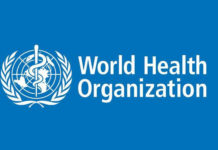In 1859, Charles Darwin has included a novel tree of life in his trailblazing book on the theory of evolution, On the Origin of Species. Scientists from Rutgers University-New Brunswick and their international collaborators are trying to reshape Darwin’s tree.
A new era in science has emerged without a clear path to portray the impacts of microbes across the tree of life. What’s needed is an interdisciplinary approach to classifying the life that incorporates the countless species that depend on each other for health and survival, such as the diverse bacteria that coexist with humans, corals, algae and plants, according to the researchers, whose paper is published online in the journal Trends in Ecology and Evolution.
CNN Host Mock Indian American Spelling-Bee Champion
“In our opinion, one should not classify the bacteria or fungi associated with a plant species in separate phylogenetic systems (trees of life) because they’re one working unit of evolution,” said paper’s senior author Debashish Bhattacharya, distinguished professor, Department of Ecology, Evolution and Natural Resources, in the Rutgers School of Environmental and Biological Studies. “The goal is to transform a two-dimensional tree into one that is multi-dimensional and includes biological interactions among species.”
A tree of life has branches showing how diverse forms of life, such as bacteria, plants and animals, evolved and are related to each other. Much of the Earth’s biodiversity consists of microbes, such as bacteria, viruses and fungi and they often interact with plants, animals and other hosts in beneficial or harmful ways. Forms of life that are linked physically and evolve together are called symbiomes, the paper says.
The authors propose a new tree of life framework that incorporates the symbiomes. It’s called SYMPHY, short for symbiome phylogenetics. The idea is to use the sophisticated computational methods to paint a much broader, more inclusive picture of the evolution of organisms and ecosystems. Today’s tree of life fails to recognize and include symbiomes. Instead, it largely focuses on individual species and lineages, as if they are independent of other branches of the tree of life, the paper says.
Thamizh Schools in USA Conducts Annual Day Function
The authors believe that an enhanced tree of life will have broad and likely transformative impact on many areas of science, technology and society. These include new approaches of dealing with environmental issues, such as invasive species, alternative fuels and sustainable agriculture; new ways of designing and engineering machinery and instruments; enlightened understanding of human health problems; and new approaches to drug discovery.
“By connecting organisms to their microbial partners, we can start detecting patterns of which species associate under specific ecological conditions,” Bhattacharya said. “For example, if the same microbe is associated with the roots of very different plants that all share the same kind of habitat, then we have potentially identified a novel lineage that confers salt and stress tolerance and could be used to inoculate crop plants to provide this valuable trait.”
By Premji













































